Last updated on March 30th, 2024
Special Guests: Dr. Carol Kline and Nora Livingston
On June 23, JourneyWoman Publisher Carolyn Ray hosted a session with two experts in animal tourism, Dr. Carol Kline and Nora Livingstone, to discuss the ethics of animal tourism. This was the #1 topic of request by JourneyWoman to learn more about. We’re planning to do more on this topic, so let us know your thoughts and feedback in the comments below.
Introduction
Carolyn: When I took over JourneyWoman about a year ago, ethical travel was one of the topics that I really wanted to focus on was understanding better how we could engage with animals and with wildlife. I grew up in Florida and have always been around animals; sea turtles, manatees, sharks, you name it. There’s lots of diversity of ocean life there. A few years ago I had the opportunity to go to Kenya and visit the Sheldrick Wildlife Trust and the Giraffe Centre.
I’ve been on a learning curve and I thought this would be a great topic for other women to learn as well, so that when we are travelling we can make good decisions about the kinds of things that we do.
Often we’re told that something is okay to do because it is legal or because other people do it, but I think we have to ask ‘how do we know?’
How do we know that it’s safe for the animals? How do we know that it’s safe for the community? How do we know that it’s ethical? And how do we know that the animals are being treated well and we’re not adding to the problem and contributing to it?
Today, we’re going to talk about what kinds of questions can you ask when you’re travelling. Also, how do we know how to evaluate something and really have our own set of criteria when we’re being told things?
I want to thank both Carol and Nora for being so generous with their time today and joining us to talk about this. They were both referred to me by other experts, and I can’t thank you enough for taking the time to join us today. I’m going to introduce you both quickly and then we’re going to get right into it.
Dr. Carol Kline is an Associate Professor of Hospitality and Tourism Management at Appalachian State University. She’s travelled extensively all over the world, to Ghana, Peru, Cuba, Granada, Galapagos and all over Europe. She focuses on her research on tourism planning and also development, and she’s written several books as well in the last few years. She is also the founder of Fanimal which is a non-profit organization that she launched in 2018 to work with animal-focused people.
Nora is the CEO and Co-founder of Animal Experience International, which is a woman-owned B corp – and we’re going to talk about why a B corp is important in a minute – that sends volunteer tourists all over the world to assist with wildlife rehabilitation.
I’m thrilled to have both of you here with me today. And as I said, I think this is a really important issue, and even more so when we look at the effects of COVID and climate change and all the things that have changed in our world, and how we as women travellers can take a more active role in helping protect our world. So, that’s what we’re going to talk about today. Are you ready?
Nora: Absolutely.
Carol: All right.
If you missed the Live Session, catch it here!
Carolyn: Tell us a little bit about what you’ve been doing and how you got into this. Just give us a bit of your background. And Carol, if we could start with you that would be great.
Carol: Yeah, absolutely. I have been a tourism professor for over 25 years. As you mentioned, I focus on rural development, rural planning, using tourism as an economic tool to increase the wealth in poor areas but doing so without screwing up the environment or the social fabric of a place.
Quite honestly, I saw my 50th birthday coming at me and I realized that I had done only tangential work with animals, and I have love animals all my life. And so, the first thing I did was I decided to switch all of my research agenda to animals. And animals fit quite nicely within the tourism realm, which we’ll be talking a lot about all of the ways that we experience animals while we’re travelling. I switched my research agenda. I created a class – I’m very fortunate to have the flexibility to do that – and I created a class called Animals, Tourism and Sustainability.
And then, that wasn’t quite enough and so I founded Fanimal, as you said. And Fanimal is meant to be a voice with all the other voices that advocate for animal welfare, but we in particular focus on animal-focused careers. Because, I don’t know, Carolyn, if you or Nora when you all were younger, I wanted to be a vet. And I’ve met lots of students throughout the years that love animals but they didn’t know how to express that through a career. We’re focusing on helping people, early career and even mid-career people find that profession where they can directly or indirectly help animals
Carolyn: Oh, that’s amazing. And Nora, tell us a bit about your background and what you’ve been up to.
Nora: I founded Animal Experience International with my friend Heather, Dr. Heather actually. She’s the veterinarian. We met at a wildlife centre in Canada. I was a volunteer coordinator and she was, and still is a vet there. And after I left she came to me with this idea that – this was 2011 – there just wasn’t a group out there that was talking about ethical travel, there wasn’t a group that was just talking about volunteering with animals, and there wasn’t a group in Canada that was really talking about volunteering.
We decided to make up AEI and make it up as we went along, which turned out to be fantastic because we were able to not behold in any way with a parent company or anything. We were able to really work with the ethic that we really believed in and then grow from there. So that was in 2011. In 2012 we had our first volunteer go away and come back safely, which is important. And we’ve had over 700 volunteers at this point, which is amazing.
We specialize in safe, authentic and ethical travel. And so, we are authentically helping the animals. We’re authentically working with local leaders; we’re not taking any leadership roles. And we’re also making sure that it’s safe. So, I go to all the places first as a solo woman traveller to look at all the placements that way, from airport pick up to accommodation to the work that the volunteers will eventually be doing. And it means I also get to have a lot of fun.
When volunteers come to AEI and they apply, they have an interview with me, and the interview is great because I’ve been to these places. And so I genuinely get excited when they want to go to these places. And I can say, “I’ve been there, I’ve taken those steps, I know the people you’re going to be with.” And I’m, yeah, sincerely so excited for that. So, it’s an amazing job because I get to travel and then I really get to be excited when everyone is ethically travelling with us.
Carolyn: What does it mean to be a B Corp? Can you explain that? Patagonia would be an example of a well-known B Corp.
Nora: Yeah, so we are a B Corp, and we were first certified in I believe 2014. We’re just going through our audit right now this week, and it’s really important because you get certified as a B Corp but then you get audited now every three years.
And what a B Corp is, it’s sort of like fair trade to coffee or Forest Stewardship Council to paper and wood products. It is making sure that you can be a force for good. And we, the whole community really believes that business can be a force for good. We are a corporation. We make money. We’re not an organization. But, we can operate like an organization or like a charity.
We have a triple bottom line, which means we actively think about profits but we also actively think about people and the planet. We think about them but we also have to quantifiably show that we have a benefit to the communities we work in, to education, to the environment, to our workers and our supply chain and everything like that.
I love being a B Corp because I have always said there’s no point in trusting me – you don’t know who I am – but you can trust the data and you can trust the numbers. And so we can show you – it’s not just me trying to convince you that AEI is ethical; I can show you exactly how ethical we are.
And actually now there are more than 1,500 other B Corps, like you said, Patagonia, Ben and Jerry’s is a really good example. They’re in a lot of different industries.
Carolyn: Purpose before profits, right?
Nora: Absolutely.
Carolyn: Or at least equal.
Nora: Yeah.
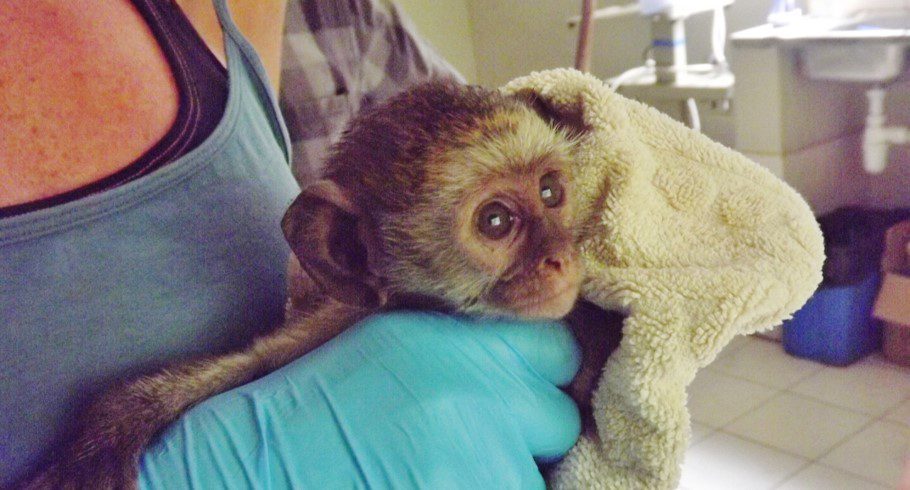
What’s the problem with animal tourism?
Carolyn: Let’s talk a little bit about the problem that you see when you look out into the world of, you know, animal tourism, wildlife. What is the problem? Help us understand what issues you think we’re facing at the moment. And Carol, could I start with you?
Carol: Absolutely. Let’s just start by just naming all the ways that animals are involved in tourism. We ride them. They carry our gear. We eat them. We go to festivals that are food festivals that are centred around different types of eating experiences, and sometimes you travel somewhere and a particular animal might be an iconic dish. I know when I went to Peru an Ecuador guinea pig was a particular animal that was considered a delicacy.
We have captive animals within entertainment. We use animals in environmental education. I think we’ve all heard about the negative effects of animal selfies, so even just the photography angle; safaris, hunting, fishing. Nora, I know I’m leaving so many. You know tourism can be a force for good in that it brings money into an area that can help wildlife conservation. Nora, what have I forgotten?
Nora: Oh, I think you hit on most of them. I think just thinking about animal exploitation and animal trafficking being sort of the big umbrella of all of them. Humans being fairly entitled over the natural world and exploiting animals rather than working with animals in a relationship of respect or consent.
And I think when we talk about authentic travel, which so many of us want to be part of, we can’t have authentic travel when there’s no consent. And so, when animals have been taken from the wild so we can have a selfie with them when animals are taken from the wild and put into tanks, that animal didn’t consent to that and that’s not an authentic relationship.
I think everyone would love to have a picture with a dolphin, and we would all love not have a picture of a dolphin because it’s in the wild and it’s majestic and beautiful. But the problem when dolphins are taken from the wild, it’s no longer authentic and it’s no longer obviously ethical. And these animals go from the great vast of the almost infinite seas to a small area for what gain and why.
And I think so many times when we have questions about ethics to do with animals and people as well as the exploitation of people and animals, we have to say why are we doing this. If we are looking at authentic travel and we’re looking at really experiencing an amazing experience in the world, why did we have to take an animal or a person and drag into what we want to have a picture with?
Carolyn: Yeah, yeah.
Carol: And Nora, you’ve hit upon the authenticity piece, because Carolyn’s original question was what’s wrong with it, what are the issues and authenticity piece, absolutely. You hit upon agency. That animal does not have any agency or any say whatsoever whether he or she is, you know, where you’re taking them. And you also hit upon the welfare piece, because once an animal is outside of its natural environment or outside of its normal social environment, social circles, its family, then it’s going to suffer. And so you’ve hit upon three very large swaths of problems, of ethical issues, and there’s more that I’m sure that we’ll get to as well.
Carolyn: Obviously this is a huge business. I mean animal tourism is an enormous business around the world. Who is helping regulate this? And who is helping make sure that the experiences that we do are safe and ethical?
Nora: One of the reasons that I love being a B Corp so much is because there isn’t really an international global agreement of what ethics look like for animals. And so, we are getting there in different industries and we’re getting there in many different countries, and agreements between countries and different continents.
But another problem I’ll say is that not every country and group is agreeing upon ethics. Not every country and group agree on some of the science behind things like enrichment for captive animals for conservation and things like that, and three’s many different stakeholders. And so, a real big problem is, if we can’t agree because there are so many stakeholders then what do these certifications mean, or what do these groups mean.
So there’s quite a few really amazing groups out there. I know that Carol knows lots and lots of them. We specifically work with a few of them. Like you, Carol had said before, the David Sheldrick Foundation in Kenya and Born Free are sort of like the highest echelon of looking at animals in captivity, why they’re in captivity, sanctuaries, things like that. The Pan-African Sanctuary Alliance is also a great group that we work a lot with.
But in terms of the entire world, you have to know about a group that is doing really great. You have to agree with all of the pillars. But Carol, why don’t you jump in?
Carol: Yeah, no certainly. You know there are private businesses that are tour operators that are lodging, that are on-the-ground guides that are involved in ethical tourism. There are trade associations that are conglomerates of, for example the Society of American Travel Writers. Some of these organizations, some of these associations have their own codes of ethics.
And, as Nora said, they’re getting there in terms of animals. They may have a nice environmental ethic, but specific verbiage about how to treat animals if there is something, it’s like one sentence or it’s very general. And not only is there a differing opinion from country to country, there’s differing opinion from species to species. We can’t make a rule about how to treat a dolphin or an octopus; that’s not going to be the same rule about how to treat a wren or a rhino.
And so, some other big international organizations that I like to look to, one, for example, is The Brooke. And The Brooke does a lot of work with horses and other equids, donkeys. World Animal Protection is doing some great, great work. They are the folks that Airbnb is working with to create their ethical animal experiences.
Of course there are non-profits that many us have heard of like World Wildlife Fund; Wildlife Conservation Society, WCS. And then there are some amazing government organizations. I have a friend that works at US Fish and Wildlife Service and I’m always amazed at some of the great work that they’re doing here in the U.S. but also abroad.
Who’s involved in Animal Tourism?
Carolyn: What about the United Nations and groups like that? Are they involved in this?
Carol: They are. They are involved in it. Personally, I think they can go farther. They are involved in tourism very heavily. They have principals set out. They have educational tools about how to develop tourism sustainably, whether it’s eco-tourism or geotourism or cultural and heritage tourism. But it’s really surprising how recent the focus is at that high government level, but also in academics, how recent the focus is on animal ethics.
I’ll mention, there’s a professor in Canada at Brock University, his name is David Fennell, and David wrote literally the book on animal ethics in tourism. And that was published in 2012, so just eight years ago. There’s been a real surge since that time. And of course, there are some things before that too, but the volumes that have come since 2012 is very impressive. It’s just sad that we had to wait until this last decade to be thinking about this critically.
Understanding Terminology
Carolyn: One of the things that I think is confusing to people is the terminology. And I wanted to ask, you know when we see the word sanctuary or rehabilitate, like what are some of the things that could be not quite what they seem? You know, if we think that we’re volunteering at a sanctuary for example or other places, how do we define those things?
Nora: That’s a really great question because, when you hear the term sanctuary you look at the dictionary definition. You say, “Oh, it must be helping animals.”
But the problem is because there isn’t a certification for sanctuaries around the world, or if there are certifications you don’t have to have it to use the term sanctuary. It can be anything from a sanctuary that is helping animals that can’t release into the wild or it can be for tourism and exploitation. There are even places in Ontario it’s legal to own a tiger. And so, if you have a tiger in Ontario you can that you have a sanctuary, even if it is a roadside zoo, which is, understandably, not what we’re looking for.
So, what you can do if you see something that says it’s a sanctuary, you can be your own journalist. You can do your own research. If they don’t have any certification – certification, sometimes there is a cost to entry and there are these barriers. If you don’t know certifications exist, if you don’t have the money to get audited to get to get that stamp, it doesn’t necessarily mean it’s not a great sanctuary. But, you can look at the animal welfare practices.
A true sanctuary will be really transparent with its welfare. If you ask them where do their animals come from, why are they not being released, what does enrichment look like, then they will want to talk about it. People who love animals love talking about how well their animals are treated.
And so sanctuaries will love to tell you, these animals are here because they can’t be released back in the wild. They can’t because there isn’t enough room for them; they can’t because they don’t have enough limbs; they have other problems, they can’t hunt or … to care for them. And the true sanctuary will tell you that, and the sanctuary will also tell you about the enrichment that they’re doing.
Wild animals go from what seems like forever, the wild spaces can go on forever. And if you put them into an enclosure it can be devastating for them physically but then also mentally. They can get something called zoochosis, which is a psychological problem that starts with boredom and then it increases. And so, I think a lot of us have seen pictures or videos of animals pacing back and forth or animals knocking their heads on bars in rally old zoos and things like that; these are the problems.
So, a true sanctuary, especially now, will know this and will know what an animal in distress looks like and how to get it out of distress if it got to there. There are some sanctuaries that rescue or confiscate animals from not great sanctuaries or places that they are in distress, and then they put them into better enclosures.
And so enrichment – sorry, I know I’m taking all your time, Carol, but I’ll talk about enrichment for just a little bit. Enrichment is really, really important because it not only helps the animal be a wild animal but it also helps them not be bored.
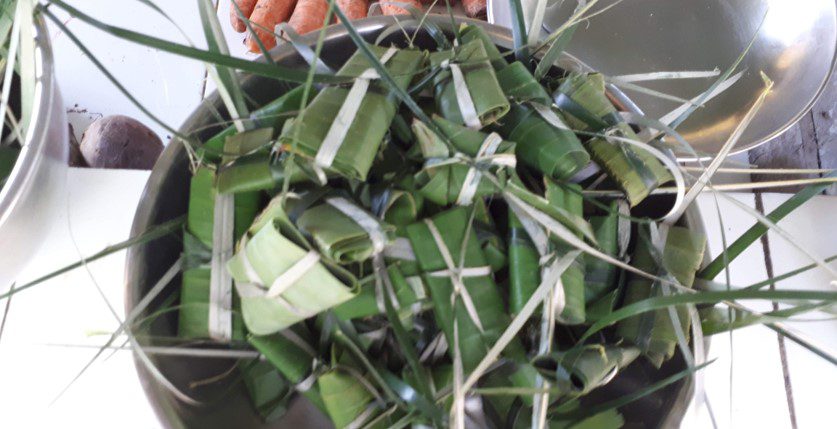
So if you’re looking at a sanctuary and you want to visit it, you want to know if it is an ethical sanctuary, just ask what their enrichment is. What are your enrichment policies? What are you doing? They should say: “Let me tell you how great it is for our animals here.”
The Good and Bad
Carolyn: Let’s carry on with that. You mentioned some good places, what are the good and bad? Give us some examples of good and bad, just so we have a sense where the boundaries are.
Nora: I don’t want to shame any places but really great places will always have enrichment policies written into what they’re doing. They’ll also have education built into what they’re doing because again, people that love animals don’t want to see animals suffering and they don’t want to see animals being exploited.
And so amazing centres will have really great, sometimes really great Facebook pictures that they just tell anyone who will look at their Facebook pictures these are the animals that are being rehabilitated, this is why it’s happening. Some centres don’t have money or time for that, but that’s a really great thing to see. And most centres that are really wonderful will have local education.
So we have an amazing centre that we send people down to Costa Rica to visit and it’s with sea turtles. It’s in-water work that you are acting as a citizen scientist with local scientists down there. And it’s fantastic because the whole time you’re there, every single day you get a presentation from a marine biologist, so you learn more about Costa Rica in general, sea turtles, conservation. But then also, the local Costa Ricans in the area know more about sea turtles and they know more about what is happening to those sea turtles specifically.

Carolyn: Mm-hmm. And what about other places around the world? Who else is doing would you say … and not even like the place but even maybe there’s more of a general kind of dos and don’ts or that kind of thing.
Nora: Yeah, like you said before you visited the David Sheldrick Foundation in Nairobi. They are wonderful because, again, you know exactly where all the animals are from. You know why they’re in rehabilitative care. There are animals in sanctuary there and they tell you why they’re in sanctuary. And they do tons of education.
Another really important thing is there’s no touching of the animals there. The wild animals are not there for you – I mean you can get a selfie from far away, but they’re not there for you to touch and manipulate the wild experience for them. It’s all about consent, and so they can leave if they want to.
You know I would say everything that’s on AEI is really good, and that’s why we’ve partnered with them. I’ve been there. I was able to see that they’re really great. All the programs contact us first to ask for help and to start the partnership. It takes about three years for us to build a partnership, and then I go and travel to these places.
But something we always ask upfront is, “Do you have animals in care forever? If it’s sanctuary, what does that look like?” And if it’s an elephant centre, we always ask, “Is that elephant ever ridden?” And if the elephant ever does have people on his or her, generally her back, then we say no; not sanctuary, this is not what we’re looking for. So it’s another really good question if you are looking for, if you – you know, you want to see animals and you want to have these authentic experiences, you can look at well there’s elephants here, is the elephant free to leave? Is the elephant being worked?
Carolyn: Mm-hmm.
Carol: Carolyn, Nora is again touching on so many points where people who want to be an authentic and ethical tourist need to consider these things in the abstract. So, Nora mentioned the supply chain. When we’re talking about travel experience supply chains we need to consider who is working.
And if we’re going abroad, we don’t want to see – you know I live in the United States, I don’t want see an American or a Canadian or someone from North America doing the majority of the work, and definitely not the majority of the leadership. And so the local involvement, the local ownership, again there’s local solutions as Nora mentioned, that’s very, very important.
And so when we talk about animal experiences, of course, we’re absolutely talking about the conditions of the animal, the treatment of the animal, the enrichment as Nora said, the emotional lives of the animal. But we’re also talking about everything else around it, everything in the supply chain, the operators, the operators of the facility. Where does the money go? Is the economics of the operation going back – is it leaving the country and going back to some western company? Or is a lot of it being reinvested in the local community, perhaps on conservation efforts?
What questions can we ask?
Carolyn: So much of this is about transparency, right? And that’s certainly something that you can investigate before you plan anything, through websites, through Facebook pages, through social media.
You know, I think that’s what you’re saying is we’re looking for places that are super transparent and open about sharing information, not things that are kind of hard to find and secretive.
Carol: Right. I am absolutely saying that. If you want to be an ethical traveller, you cannot get away from doing work upfront. It’s just part of the deal. Nora was mentioning a Costa Rica experience that AEI crafts. I am a proud client of AEI. I took a group of my college students to Costa Rica last year. And now that I’ve seen exactly how AEI handles every single part of the supply chain, now I don’t need to do as much research. I don’t need to. But in the beginning, if you don’t know the operator and you don’t know how they’re interacting with a community, how they’re interacting with their animals, where the money is going, yeah, we can’t get away from doing that research and looking for that transparency in order to be an ethical traveller.
Animal trafficking
Carolyn: I want to touch a little bit on, not too much but just a little bit on animal trafficking, because I think it’s somewhat related to this, especially when we go to places and we’re told that we should try a certain food because it is authentic, and then perhaps it’s not and it’s just being curated for us. What’s the deal there? Like, tell us a bit about that.
Carol: I’ll start with that one if that’s all right, Nora. OK. I’m going to mention the world’s most trafficked mammal. It is called a pangolin. And Nora’s going to have much to add to this. We both love pangolins. Carolyn, do you have a picture of a pangolin? I’m not saying penguin, everyone. It’s pangolin.
And pangolins look like, if a dinosaur and an aardvark had a baby it would be a pangolin. They have scales on them but they are mammals. And ah, there is a beautiful, beautiful example of a pangolin right there. Doesn’t it look like that should be running around in Jurassic Park?
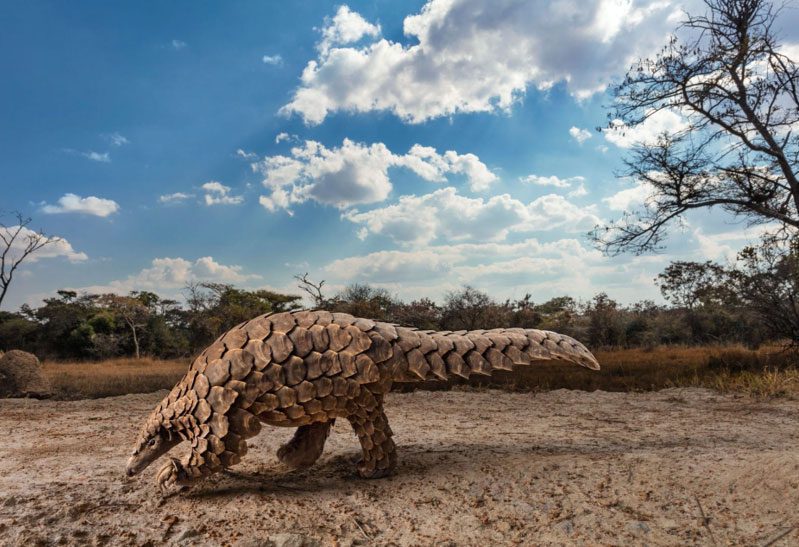
The scale-covered Pangolin is one of the world’s most trafficked mammals. / Photo from National Geographic
Carolyn: Very nteresting. We talked a little bit about some dos and don’ts and some questions you can ask, but give us some more kind of guidelines, if you wouldn’t mind, on … And maybe make them a little more animal-specific if we can. So, if we’re looking at dolphins, for example, is it a good idea, bad idea? What’s the verdict? I feel like, you know, Judge Judy here, but that’s …
Nora: Well I would say any time an animal is changed or put into a tank or put into an enclosure for you, I don’t know how we could ever say that’s ethical. Animals are meant to be living in the wild. And like I said before, consent is super important. And so, dolphins don’t want to swim with you. If they did want to swim with you then they would. But they generally stay away from you.
And like I said before like authenticity is so important when travelling. So people go travelling and they’re on a boat and they see dolphins jumping in the distance, and it’s a magical, exceptional experience. And then suddenly, people become entitled to this experience and they say, “Well I want it so I am going to get the experience by trapping” – horrifically I will say, horrifically trapping a dolphin, putting it in a tank and making it theirs, “just for me”.
And the same thing will go for elephants. Someone a long time ago saw an elephant and said, “Wow, isn’t that thing amazing. I’m going to take a picture of it.” And that was authentic. And now people say, “Well I want a picture with an elephant”.
And so every single elephant that’s used in tourism, that is used with people riding on it has been broken. They’re not a domesticated species at all. So, every single one has been horrifically broken as a baby. And it’s shocking and it’s very disheartening. If people want to look into it they can, and they will never look at elephants that way again. But specifically looking at elephants, do not ride them. There is no need for that. And it’s not authentic; it’s just being done to get money, to get your money.
To go back for one second, we talked about trafficking. And there are so many hotels and resorts and everything else that will have wild animals. In Central America, they have like [tigjus] or they have other primates, or different monkeys or different adorable mammals, or they’ll have exotic birds in the lobby. And so you say, “Oh, I should go there.”
Carol: Fish, fish, a lot of fish.
Nora: Fish as well. And the reason that these animals are there is because it works, because people have gone to certain countries and they have said, “Wow, do I ever want to see a scarlet macaw and this is maybe the only time I’ll see it.” But when that scarlet macaw dies, another one will be stolen from the wild to go in that cage.
And the people typically that are doing this don’t hate animals. They just need to feed their addiction, their family, themselves. They’re just like us. They want to make money. And if we are able to work in a sustainable fashion with these communities and say you don’t have to steal animals from the wild, we can all work together and you can have ongoing like we were saying before, supply chain. We can have people coming all the time to go on a nature walk and look at scarlet macaws, we don’t have to do all this dangerous work, I think that’s really important to think about.
If you are going somewhere, where did the animal come from? And who was in danger because you wanted to see that animal?
But, if we’re looking at it from that sense, this is a failure on all of us, not just because we care about animals but we care about human rights. And when animals are trafficked, so are guns and people and drugs, because this is how people are getting money. So we have this responsibility to not only the animals but the people in this community to have sustainable, ethical ways that we can all work together.
Carol: Yeah, sustainable livelihoods and alternative ways of making a living is very much a big part of the solution to wildlife trafficking. I would love to make a point about Nora’s example of the macaw, or the octopus in the tank in the hotel. Sometimes it’s not just that one macaw. Sometimes there are several African parrots that were taken. And in transport, you lose some of them. Many of them die. Being transported from a natural environment to whatever environment they’re going to is rough; it’s absolutely rough. This happens with kangaroos. And so it’s not just that one animal. Chances are there’s many, many, many animals that are affected in order to have that one or two attractors in place for the visitors to look at.
Carolyn: What do you recommend we do? If we see animals in, as you say, in hotels or other places, what can we do about it as travellers?
Nora: I think the very first thing that we can do is not go to that hotel. If you have already booked in a hotel, you can talk to the manager. Like, we’re voting with our dollars every time we do something. And so, if you go somewhere you’re endorsing everything that they do.
So, if you have already gone somewhere and you are feeling guilty about the past, you can send an email to the manager. You can call them. You can send them a message and say, “I just learned about this and I’m not OK with it, and I won’t be coming back.” If you are staying somewhere you can say the same thing.
Like I said before, there’s not like a global association that you can call, but many veterinarians in the area will know about sanctuaries or rescues or rehabilitation centres. And like Google is our best friend in this scenario. And you can Google a local vet or you can Google where you are and just put in sanctuaries wildlife and you can talk to them.
Oftentimes centres will know the animals are there, but sometimes they won’t. This happens sometimes in Guatemala very close to our wildlife centre. They have a really good relationship in all the towns around. And so when a new restaurant shows up from people that maybe are not from exactly around there and know about the centre, they will bring cute animals to lure tourists in.
And tourists, because they’re typically around that area to see this wildlife centre, will call the wildlife centre and the wildlife centre will walk down and say, “Did you know that this is actually very illegal?” And “We will take this off your hands now so you don’t get in trouble. We’ll rehabilitate it and release it for you.”
So there’s excellent, wonderful people all over. If you see something, then absolutely say something.
Carolyn: We think that oh it’s just one bird or it’s just one animal, and what you don’t realize is there’s a whole ecosystem around this that’s supporting that activity and it’s not just one animal, it’s many, many, many, many, and especially over the lifetime of these animals as well I would think.
Nora: And there are whole forests in Southeast Asia and in Central and South America that are dealing with empty forest syndrome. Because there are so many what we think as cute and exotic animals being taken from the wild, the whole ecosystem is being thrown off and there’s not enough animals in that ecosystem just because of trafficking.
Carol: You can also, once you’re at home or you have time you can also talk about it on social media. Educate people. Tell people about the experience. You know at least if that animal is going to be there, use its suffering, use the situation to educate people about it.
I just learned a term this morning called collective moral reflexivity. Isn’t that a wonderful academic term? It’s being used by all of us on Instagram and on Facebook and on Twitter. We all get behind a feeling of an ethical cause and we spread the word. And so, that is something very powerful and very good. You’ve got animal selfies on the one hand being a negative force in social media, but we’ve got collective moral reflexivity.
And I have to credit the author, Mrs. Mucha Mkono. She’s a wonderful tourism scholar who writes about trophy hunting and lots of animal tourism issues.
Carolyn: There’s so much to discuss here. Every time I talk to you two I learn more. One of the great points, Nora, you brought up last time we spoke was when you’re engaging, or you want to engage with animals is asking yourself why. Can you speak to that?
Nora: Yeah, absolutely. I think you know looking at all tourism we should be wondering why we want to do something. And when we go on vacation, our morals don’t go on vacation. So, oftentimes people will say, “Well, I know it isn’t great for the animal but I really want this.” And OK, but what if another million people also really just want to sit on an elephant? That means there are a million people that just sat on an elephant.
And do you want to do this because it is right and ethical and this is a wonderful way for you to go bird watching and show off? Or are you doing this just to show off on Instagram? Are you doing this just to be the last person that gets to see an animal? I think we need to understand that we as humans feel entitled over the natural world. And instead of looking at it with we have stewards of a natural world and we have a responsibility to protect and conserve, sometimes we look at it as we are here just to get a picture and to have a bucket list experience than to cross it off.
I think if we are here to be authentic and if we’re here to have a real experience, it feels better when it’s a real experience. It’s not just one of those, “Oh, there’s an elephant in the background.”
Carolyn: It’s more magical isn’t it?
Nora: Absolutely.
Impact of COVID
Carolyn: Yeah. There are a few questions that are coming in from Facebook and I just want to make sure we get through them and remind the folks on Facebook to let us know if you have questions. But one of the questions is do you have a sense of whether some of these sanctuaries and important places that are helping animals have been negatively impacted by COVID? And if so, what can be done to help them?
Nora: Yeah, well absolutely. So, all of our centres, we’re in contact with about 20 centres and all of them needed to shut their doors to it, which was really difficult when that first happened. And we don’t know when tourism will start up again.
The best thing that we can do, best two things we can do is, one, donate to these centres. All of the centres that we work with because they are operated and led by local people, are still operating. There’s animals that are still being rescued, are still in care, are still getting exemplary care. But, because tourism has slowed in the whole area and because we can’t send volunteers to them, they do need to have funds.
The other thing we can do like Carol mentioned before, is share this on social media. Look at centres that you really like, do a little bit of research and say, “Oh, I love sea turtles”, and throw a donation their way and then tell your friends, “Hey, sea turtles around the world are still laying eggs. There are still poachers. There are still ways that we can help. Why don’t you help them too?”
Carolyn: Yeah. And when we go back to travelling, what do you think the impact will be on these places? I mean obviously there will be some good comes from tourism, but as we go through this experience – and it’s a time to learn, which is what we’re doing now to prepare for travel – but do think that we’ll kind of go back to our old ways? Or have we learned something new in this time?
Carol: I hope we’ve learned something. I hope we’ve learned something about our sort of creating dependency for animals on us to feeding them. There are places around the world that are not only sanctuaries. There are temples. There are parks. There are lots of gathering places that tourists go to visit, and the animals have learned this and they come and they are fed. So those places also have some suffering currently and I hope that we are reflecting on that.
One of the writers at National Geographic, Natasha Daly, is addressing this issue. I’m not sure when it’s going to be coming out. And also Bob Fischer who is an animal ethicist who is at Texas State University is addressing this issue of animal dependency. So there are people writing about this and paying attention to this.
I hope that we as individuals also will just be thoughtful not only about what we’re doing in the moment but how it sets up a ripple effect. If everyone, like Nora said if everyone did it and everyone did it for 10 years, what is that going to mean? Because we now know that world pandemics can happen, and so we can’t be so cavalier with our individual behaviours. But our individual behaviours are very powerful, and so we can use those for good not evil.
Nora: And I think I have been really heartened with so many [sheltering place] orders and so much people, us having to be insular, we have really looked around our community and have said how can we help our community. How can we really be better neighbours? And while being better neighbours, also think about the natural world.
I’ve seen so many posts and so many people talk about how, with their one hour of activity they were allowed to do in March and April, they were able to hear the birds. And they actually went outside and walked and they were able to really see all the little creatures and bees and flowers around their area.
And so I hope that this translates to travel, that people realize we’re in this community. And then when we pick up and we travel somewhere we’re in another community and there’s a lot of local animals and bees and flowers but them people that we can work as well and it’s not just about… Like I said before, our morals and our ethics don’t go on vacation when we go on vacation. So, why not take them with us? Why not shop local and bring a bag and do our research before. We do our research when we buy coffee, why wouldn’t we do more research when we travel somewhere?
Carol: I think we’ll be more deliberate about what we’re choosing to do. It’ll be more about quality not quantity. We’ll savour these experiences because they are now more precious to us we realize. And so we’ll make really good decisions with these dollars that we’re spending in local communities.
Carolyn: Let’s hope so. And I think the other thing that’s become fair is our personal accountability, you know. And we have to educate ourselves and we have to teach ourselves. And we have to take the time to learn and be responsible for that and not kind of walk into places and hope for the best, which I think is …
For me the intentionality of travel, you know I think we’re going to see more that because now we know how precious it was to be able to get on a plane tomorrow and go somewhere. And we can’t do that anymore, so we’re going to be much more purposeful, intentional and thoughtful, I hope, when we can return to travel and do things that are good for the earth, not taking away from it which is what this is all about today actually, so.
I don’t know if we’ve got any more questions that want to come in but I want to let folks know that Carol has written a really wonderful article – it’s on our website – with dos and don’ts and guidelines. And we’re going to post that link on our social media so that you can take a look at it and read it. And I’m hoping that this is the first of many conversations around this topic because I think it’s extremely important. I think, you know for those of us that love animals and have them all over our houses, which I get teased about all the time with my elephant earrings and everything else, that we need to take a more active role.
So I want to thank you both for this really, really great discussion. And hopefully, we can do this again soon and keep talking about it.
Carol: This was great, Carolyn, thank you.
Nora: Thank you so much for having us. It’s such an important discussion and I know we both loved being part of it.
Carolyn: Oh, thank you. Thank you. And I just want to mention, we have some other webinars coming up too. We’re just planning out July and August but we do have two book clubs in July. And we’re just wrapping up some research on our risk and reward survey, and our last focus group session is tomorrow so we’ll be sharing those results soon, and more to come.
So again, thank you. Thank you, everybody, for joining us and have a great evening. And please do give us some feedback if you have a minute and let us know what you thought of this and if you have suggestions for future webinars. Thank you.
Quick Links
Carol’s organization, Fanimal
Nora’s organization, Animal Experience International (AEI)
The Sheldrick Wildlife Trust: Haven for Elephants & Rhinos
The Giraffe Center
The Pan-African Sanctuary Alliance: PASA
The Brooke – Action for working horses and donkeys
The Wildlife Conservation Society
U.S. Fish and Wildlife Service
Further Reading…
Tourism and Animal Ethics by David Fennel
Natasha Daly, National Geographic
Keep on learning about Authentic Travel
How to Travel Solo in Your Own City: Ten Tips to Fire up Your Inner Wanderer
Yes, you can travel solo travel in your own city or country. Here are nine tips to get you started on your adventures!
The Top Once-in-a-Lifetime Travel Experiences Every Woman Should Have, Including the Northern Lights, Camino de Santiago and More
The Once-in-a-Lifetime Travel Experiences every woman should have, including the Northern Lights, Camino de Santiago and more.
Women Share Their Best “Once-in-a-Lifetime” Solo Travel Experiences
Once-in-a-lifetime travel isn’t just about the destination, it’s about adventure, learning, and journeys of the soul.
How Women Find Healing and Renewal in Solo Travel
When faced with loss or grief, we intuitively turn to travel for wellness and healing, as shown in these inspirational stories of renewal.
Rediscover Toronto with the Honourable David Crombie, Former Mayor of Toronto
Former Toronto Mayor, the Honourable David Crombie, shares his insider tips to rediscover Toronto’s ravines, waterfront and green spaces.
March of the World-Famous Peabody Ducks: Adventures in Memphis
Women travellers can become a duckmaster for a day by walking the red carpet with the famous Peabody Ducks.
JourneyWoman Webinar: Small Ship Cruises With Aurora Expeditions
Join a special webinar on March 11 to learn about Aurora Expeditions small ship cruises, all-women trips and commitment to solo travellers.
Staying Safe in a Digital World: How Women Can Protect Online Privacy
Advancements in artificial intelligence (AI), facial recognition, wearable technology and apps are making it easier for strangers to learn personal details about us – without our consent.
Solo in Spain: Survey Shows Solo Women Travellers Love Spain
JourneyWoman’s recent survey on behalf of Spain Tourism shows that women love to travel solo in Spain. Here’s what they love about it.
Not All Wellness Retreats Are Equal: Here’s How Women Can Find the Right One
Not all wellness retreats are created equal. Diana Ballon shares her tips on how to choose a wellness retreat that’s right for you.
From the Ghettos to the Globe: Irene Nalwoga is Making An Impact
Irene Nalwoga of Women Tour Uganda is bringing solo women travellers into the Bwindi forest to meet the Mountain gorillas and explore Uganda.
30 Valentine’s Day Travel Gifts for the Woman Over 50
Get gift giving inspiration with our list of 30 Valentine’s Day Gifts for the woman over 50 traveller, as recommended by our readers.
JourneyWoman Webinar: Culinary Travel for Women, Featuring France, Croatia and Mexico
Part of our Cultural Immersion series, join us for our February 24 webinar that explores how we can forge lasting connections through food.
Getting Started in Solo Travel: How Solo Women Can Find the Destination That’s Right For You
Featured image: Feeling stuck? Learn how to decide where to travel with these tips for solo women | Photo by shiwork on EnvatoHow to decide where to travel by Karen Gershowitz For some women, deciding where to go is often the most exciting part of planning a solo...
Where to Travel in 2025: The Best Places for Solo Women Travellers Over 50
Wondering where to go solo in 2025? We’ve applied our own criteria to 10 places that inspire travel and discovery for solo women travellers.

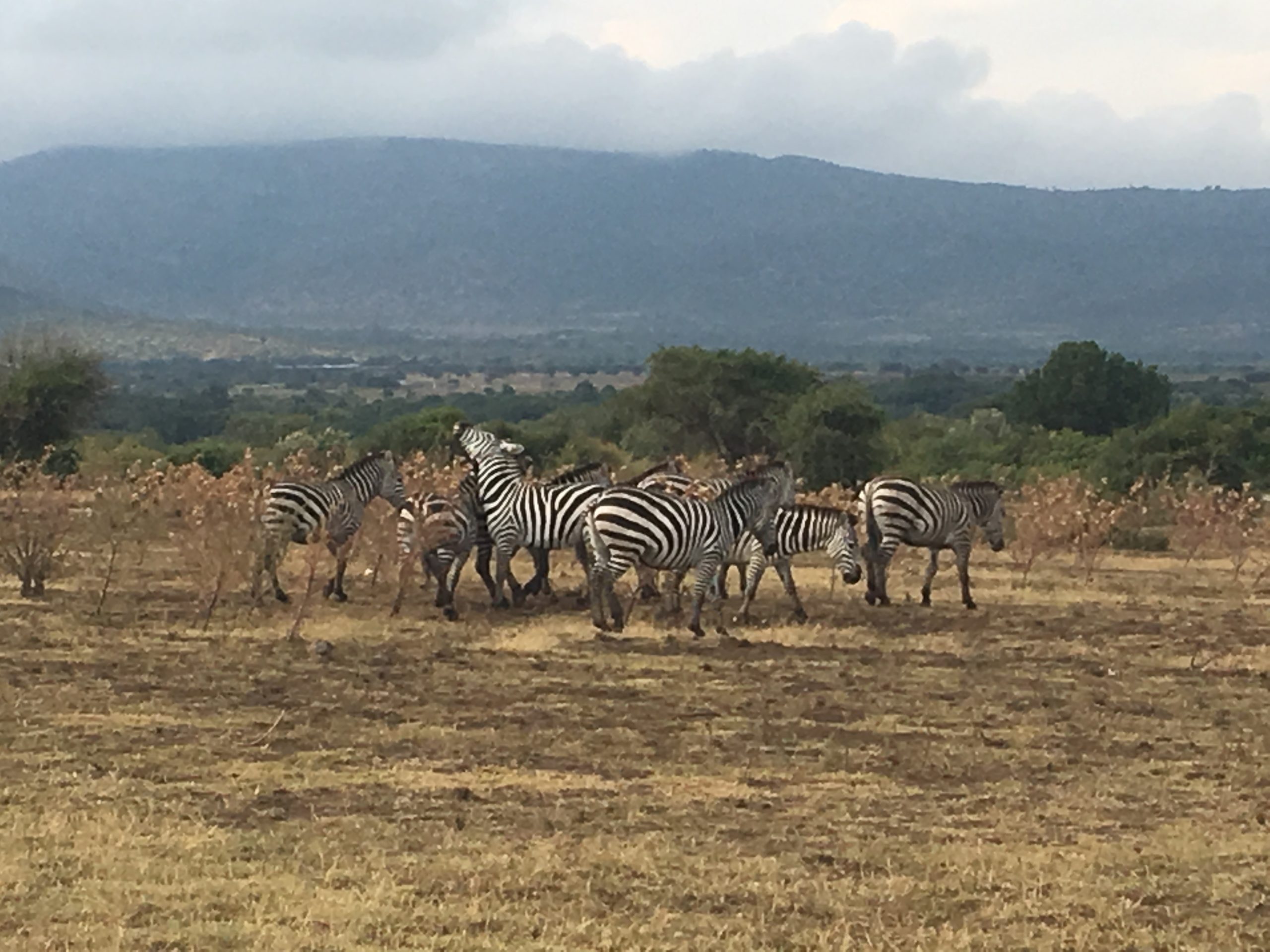

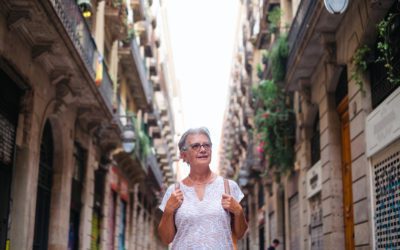


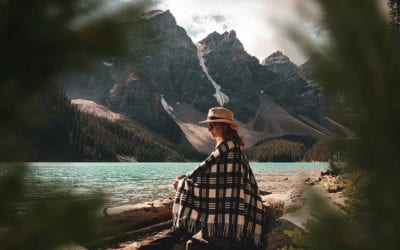
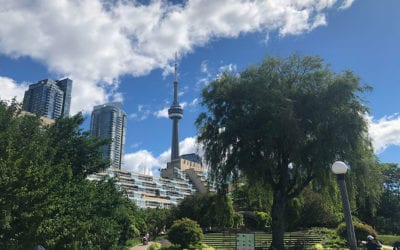

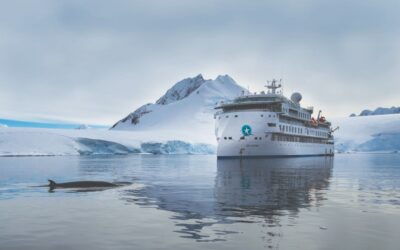

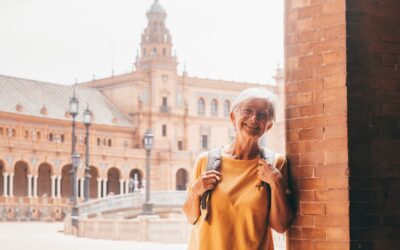
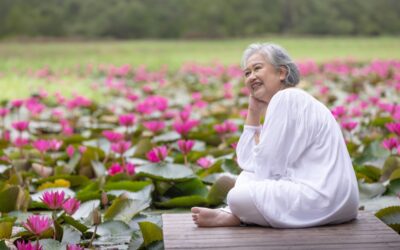
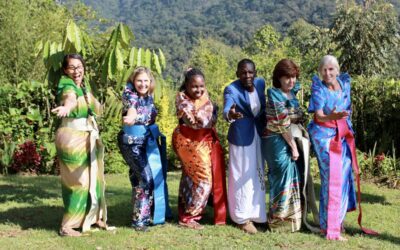



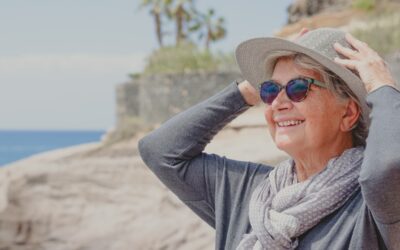

What a great article and important topic to bring up. Seeing wildlife in their natural habitats is one of my all time favourite things to do when travelling but I often feel conflicted by the feeling that how it is done in most countries does not seem ethical or in the best interest of the animals themselves. Even in western countries we seem to have the balance very off. Visiting Canada last year, 17 years after first going to Canada I was shocked at how few wild animals there seemed to be this time around and the crush of tourist numbers in the Rockies blew me away.